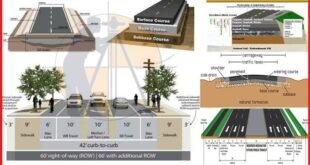The Stirrups Commonly Found In Column Design

The design of stirrups for column is created on the basis of different factors like changeable cross-sections, the number of longitudinal reinforcement bars and the load bearing strength. Stirrups in column construction are generally called as vertical ties or transverse reinforcement.
The following types of stirrups or ties are found in column construction:
1. Helical Reinforcement: The helical reinforcement is different from the lateral ties since the lateral ties contain spacing among individual ties. In helical reinforcement, the quantified value is pitch, rather than spacing.
The helical reinforcement offers more ductility and flexibility to the built up column with regard to lateral ties. They can effectively support the longitudinal reinforcement. With the insertion of helical reinforcement, the resistance capacity of the column structure against buckling become superior.
a) Ambient temperature of 27 °C (80°F) or greater; and
b) Evaporation rate that surpasses 1 kg/m2/h
Other Post
-
Transition Curve In Highways – Purpose-Requirements-Example
-
How To Find The Coordinates Of Point P With The Help Of Point A & B
The helical reinforcement is also applied as spiral reinforcement. Helical bars are suitable for seismic design. By the influence of seismic loads, the concrete affixed to the helical reinforcement is stripped off preliminary. It facilitates to give a warning sign concerning the structural condition of the column.
The helical reinforcement is a perfect example in respect of uniformly distributing loads as compared to the normal rings (lateral ties).
2. Lateral Ties: The lateral ties stand for transverse reinforcement to develop a separate ring with a fixed spacing among each link. Based on the column cross-section and the number of vertical or longitudinal reinforcement bars applied, the lateral stirrups vary from two-legged stirrups, four-legged stirrups or six-legged stirrups etc.
Given below, the detail information on various lateral tie configurations for several number of vertical reinforcement bars. The configurations are dependent on the ACI 315-99 recommendations.
1. Lateral Tie Configuration for 4- Bars: The tie is configured for 4 numbers of vertical column bars. It is a standard type of configuration applied for simple column design. This configuration is known as 2 legged stirrups column type.
2. Lateral Tie Configuration for 6- Bars: The first arrangement is observed when the spacing of vertical bars are under 150mm ( below 6”). If the spacing is in excess of 150mm, the second arrangement is observed where crossties are used.
3. Lateral Tie Configuration for 8- Bars: The first arrangement is done with the standard 8 number vertical reinforcement arrangement. Here the spacing is under 6”. If the spacing is in excess of 150mm, two crossties are utilized.
The third arrangement is known as bundled bars arrangement. Under this arrangement, two bars are combined at the corners. So, no cross ties are required. Highest 4 numbers of bars are combined.
4. Lateral Tie Configuration for 10- Bars: In this case, it is required to provide cross-ties apart from the square ties. It is also organized in bundled bars. Here bundle of 2 bars is arranged at four corners and two remaining bars are supported with the help of cross ties.
5. Lateral Ties for different column cross sections: The arrangement for 16 bars employ diamond ties. The process is very complicated to fabricate diamond ties perfectly and as a result it is ignored. The process is also complicated to arrange them properly. This tie arrangement is not suggested by ACI 315 because of the complications related to it. But, in some countries, standards utilize this arrangement for simple column design.
In A 16 bars column arrangement according to ACI 315 4 bundled bars can be arranged at each corner.
 Surveying & Architects A unique platform of Civil Engineering
Surveying & Architects A unique platform of Civil Engineering
